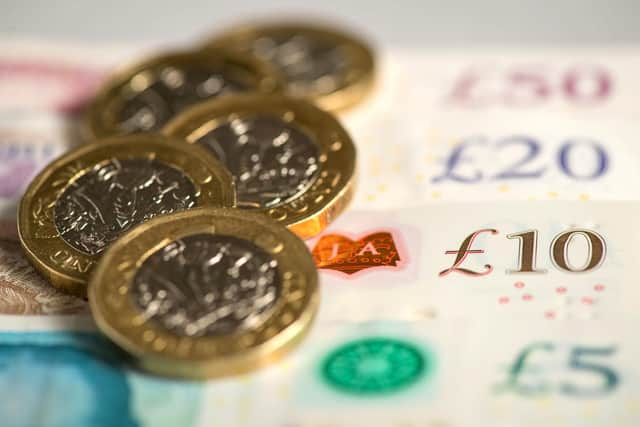Inflation by country 2022: What are EU inflation rates and how are other countries affected by high inflation?
This month, Consumer Prices Index inflation rose to 9% in the year to April, up from an already high 7% in March, the Office for National Statistics (ONS) said. It was the fastest measured rate since records began in 1989, and the ONS estimates it was the highest since 1982.
The figures will add to pressure faced by households to cut back on bills and everyday spending. Already ahead of the figures being released, surveys showed that people were switching to cheaper alternatives, and trying to control how much energy they use to run their homes. Much of the jump is down to the high cost of energy on international markets, especially gas, although oil prices have also shot up.
Advertisement
Hide AdAdvertisement
Hide AdChancellor Rishi Sunak said that inflation is hitting countries around the world, and pointed to energy prices as a main culprit.
“We cannot protect people completely from these global challenges but are providing significant support where we can, and stand ready to take further action,” he said.
Nonetheless, the figures prompted further calls from the opposition for Mr Sunak to do more for ordinary people, with Shadow chancellor Rachel Reeves announcing that Labour will force a vote for an Emergency Budget.
On the back of Mr Sunak’s assertion that the UK is not alone in rising inflation rates, how does inflation look around the world? Here are key inflation rates by country, including the countries with the highest and lowest rates of inflation.


EU inflation rates in 2022
The EU recently lowered its economic growth forecast for the eurozone by 1.3 percentage points, falling to 2.7% overall, while its inflation forecast increased to 6.1%. As a result, inflation for the EU is expected to hit 6.8% in 2022.
Inflation by country in 2022
According to World Population Review data from January 2022, the countries with the highest inflation rates are:
- Venezuela, at 1198.0%
- Sudan, at 340.0%
- Lebanon, at 201.0%
- Syria, at 139.0%
- Suriname, at 63.3%
- Zimbabwe, at 60.7%
- Argentina, at 51.2%
- Turkey, at 36.1%
- Iran, at 35.2%
- Ethiopia, at 33.0%
At the other end of the spectrum, the ten countries with the lowest inflation rates based on the same data are:
- Rwanda, at -2.0%
- Chad, at -0.5%
- Maldives, at -0.2%
- Gabon, at 0.6% (tie)
- Japan, at 0.6% (tie)
- Bahrain, at 0.7%
- Fiji, at 0.8%
- Vanuatu, at 0.9% (tie)
- Bolivia, at 0.9% (tie)
- Saudi Arabia, at 1.1%
It’s important to remember that inflation rates can be relative and each country will have its own inflation rate targets to suit the needs of the population. Nonetheless, the United States Federal Reserve has a long-standing inflation rate target of 2%, deemed by the financial experts to be the optimum rate to foster consumer price stability and employment.
Advertisement
Hide AdAdvertisement
Hide AdUsing more recent data from the OECD from March 2022, we can also see the year-on-year inflation in all G7 countries, which rose in every single G7 member country. The rates reached an overall rate of 7.1% in March 2022.
The largest increase in inflation among G7 countries was found in Germany, climbing by 2.1 percentage points to 7.4% overall, while the smallest increase was recorded in Japan, rising just 0.3 percentage points to 0.6%.
In the middle of the group, France has an annual inflation rate of 4.5%, Italy has 6.5%, Canada 6.7%, the United Kingdom recently hitting a record of 9%, and the United States rising to 8.5%, the largest 12-month advance for the States since December 1981.
Experts state that energy was the main contributor to rising inflation in France, Germany, and Italy, while inflation excluding food and energy was the main driver of overall inflation in Canada, the United Kingdom, and the United States.
Additional reporting by PA.
Comments
Want to join the conversation? Please or to comment on this article.

